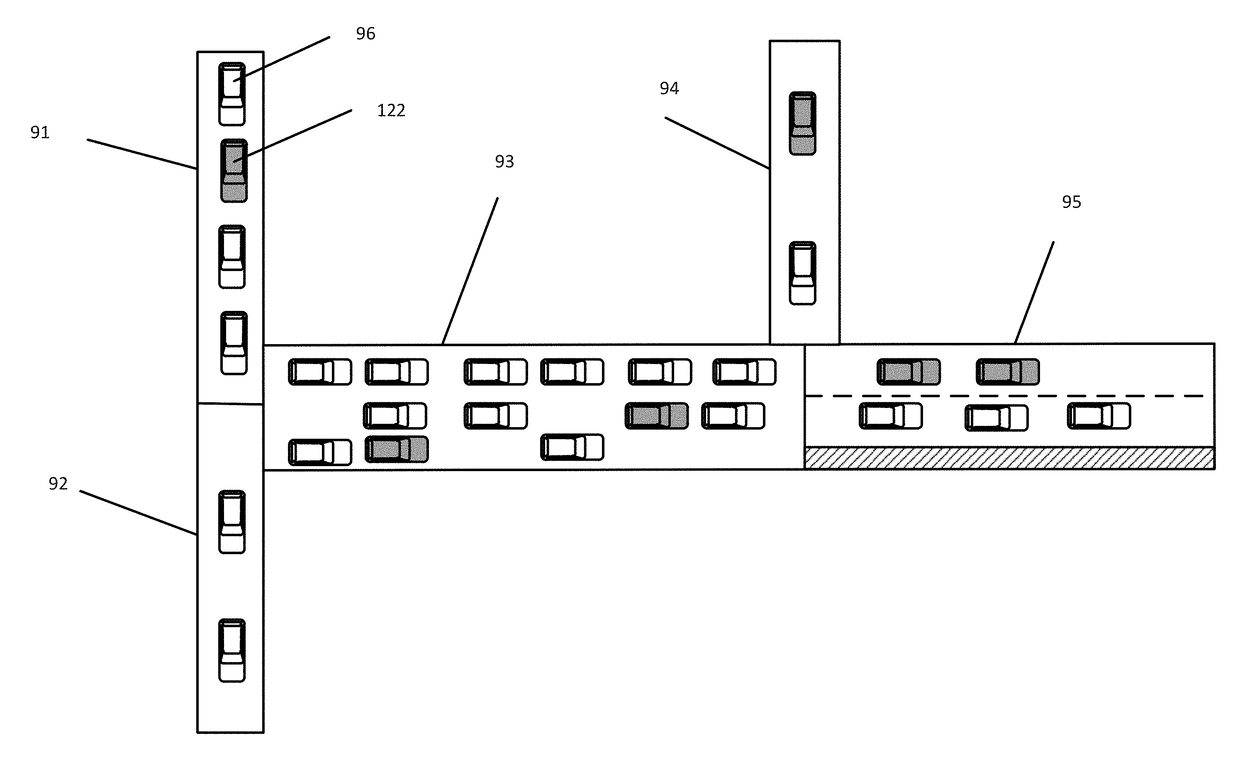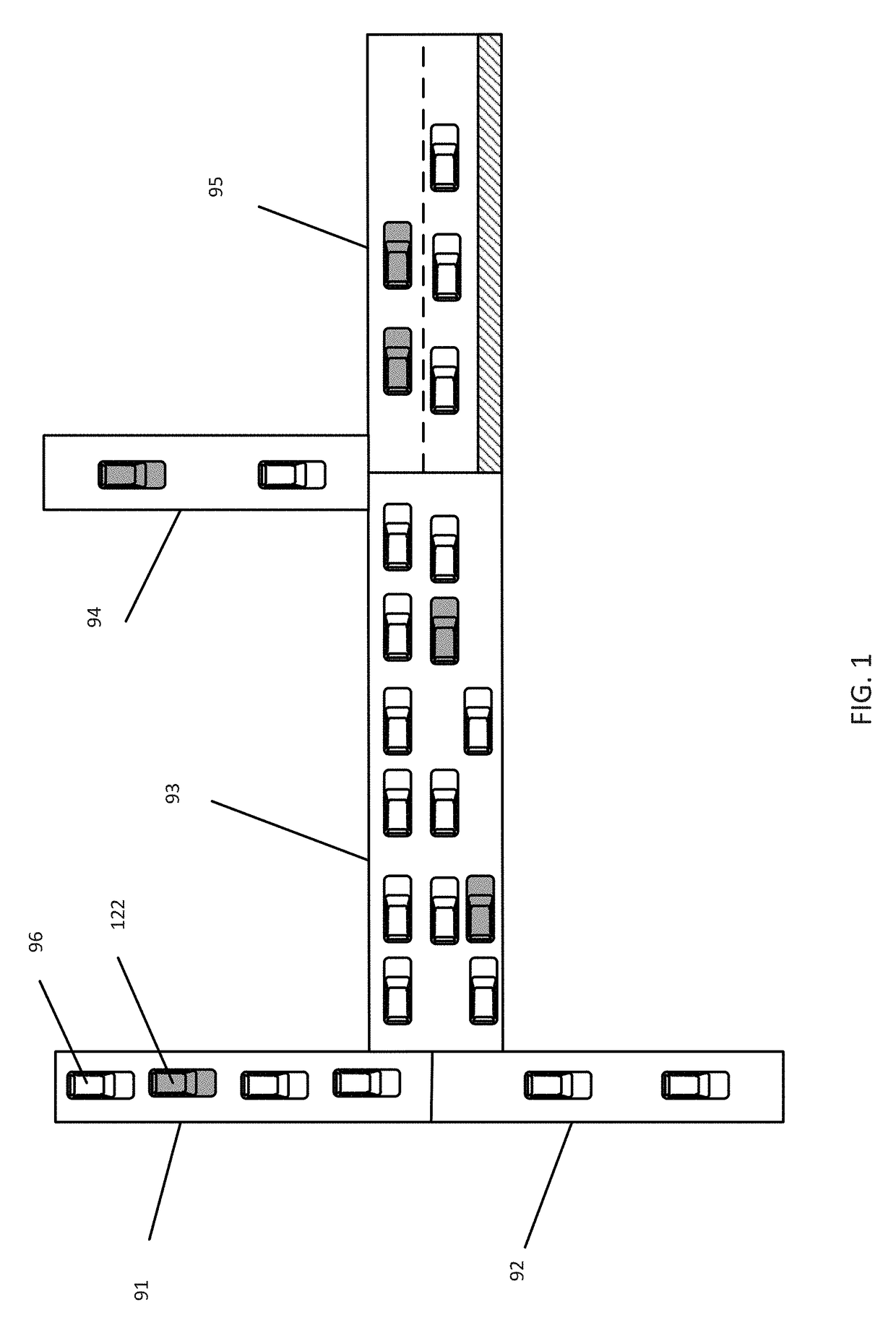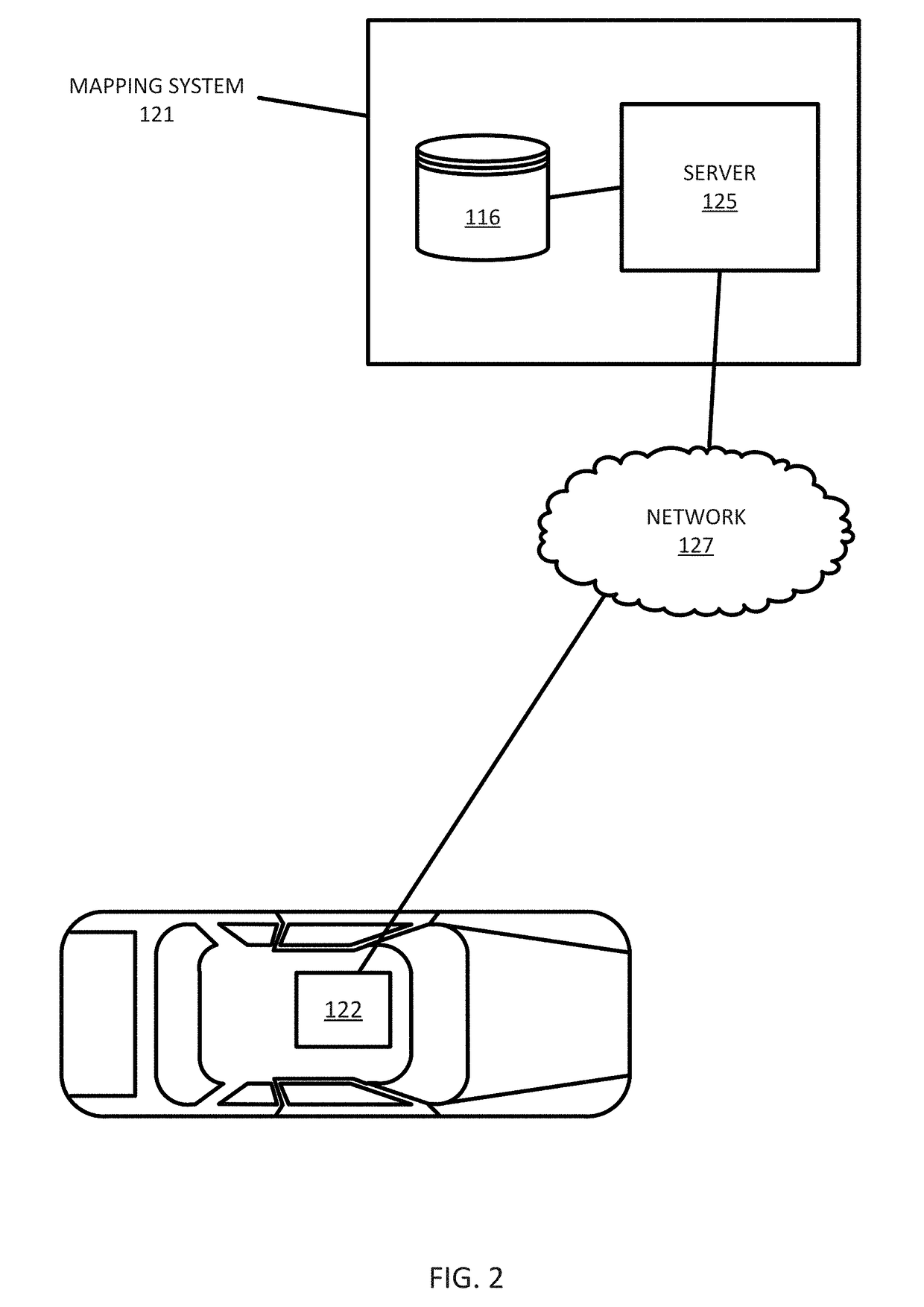Traffic Volume Estimation
a traffic volume and estimation technology, applied in the direction of measurement devices, instruments, traffic movement detection, etc., can solve the problems of difficult to measure and estimate traffic volume, limited scope, and limited methods,
- Summary
- Abstract
- Description
- Claims
- Application Information
AI Technical Summary
Benefits of technology
Problems solved by technology
Method used
Image
Examples
Embodiment Construction
[0020]The following embodiments relate to systems and methods for estimating traffic volumes. Probe vehicles traveling through the network collect data for specific times and locations. The probe data over a period of time is used to generate a probe distribution that estimates the probability for a vehicle to be at a link at a specific time. The probe distribution and probability is adjusted using road attributes and other factors. The resulting model may be used to estimate traffic volume for road segments at various times.
[0021]Probe devices, such as those embedded in vehicles or included in navigation devices have been introduced as crowd-sourced collection devices. Probe devices provide decent coverage with low cost and low maintenance. Probe devices have performed particularly well for traffic speed estimates as the probe devices collect data at multiple locations over multiple time periods. The data collected, e.g. speed reading for a vehicle, is highly useful for predicting ...
PUM
 Login to View More
Login to View More Abstract
Description
Claims
Application Information
 Login to View More
Login to View More - R&D
- Intellectual Property
- Life Sciences
- Materials
- Tech Scout
- Unparalleled Data Quality
- Higher Quality Content
- 60% Fewer Hallucinations
Browse by: Latest US Patents, China's latest patents, Technical Efficacy Thesaurus, Application Domain, Technology Topic, Popular Technical Reports.
© 2025 PatSnap. All rights reserved.Legal|Privacy policy|Modern Slavery Act Transparency Statement|Sitemap|About US| Contact US: help@patsnap.com



